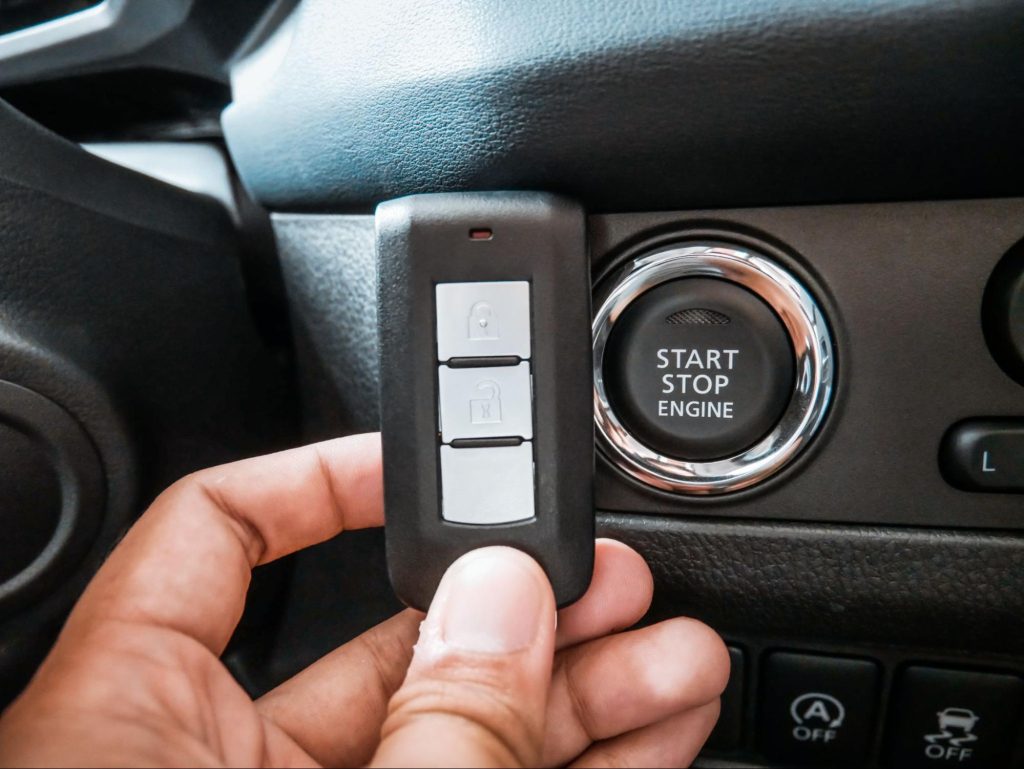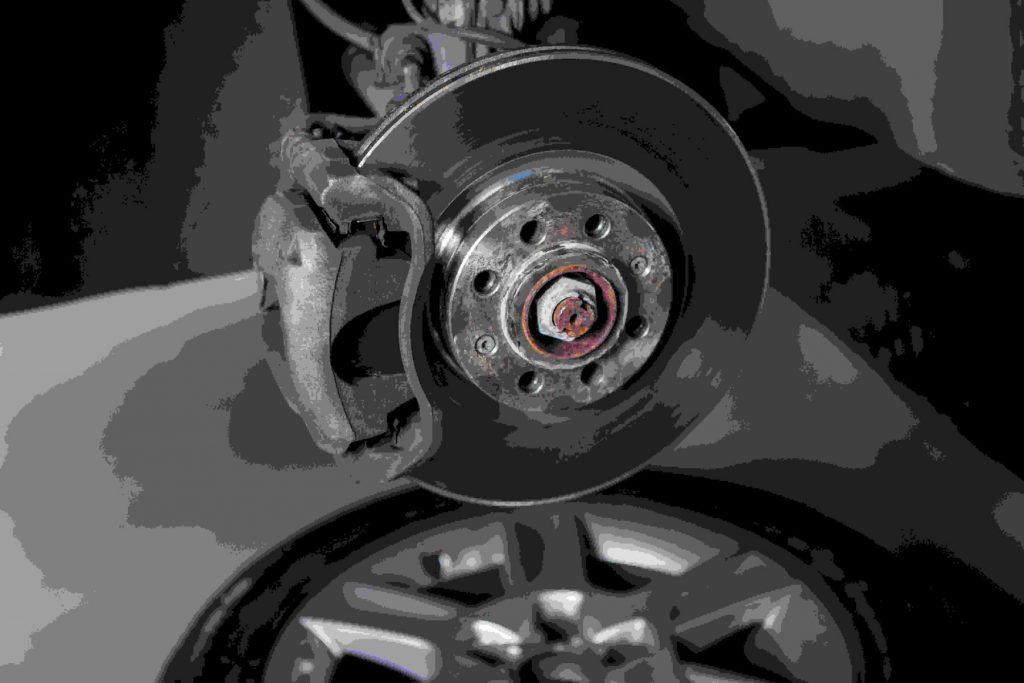As an everyday driver in Sharjah, you may have heard the term “passive disabling device” in conversations about car security or even on insurance forms. At Burj Malabar Auto Maintenance, we often get questions about this technology and how it helps protect vehicles. In simple terms, a passive disabling device is an automatic anti-theft feature built into many modern cars. It activates on its own when you turn off or lock your vehicle, and it prevents the car from being started or moved by an unauthorized person. In this article, we’ll explain what passive disabling devices are, provide examples of how they work, and highlight why they are important for keeping your car secure.
What Is a Passive Disabling Device?
A passive disabling device (also known as a passive anti-theft device) is a security feature in a vehicle that arms itself automatically without any driver intervention. In other words, once you shut off the engine, remove the key, and lock the car, the device goes to work on its own to protect your vehicle. You don’t need to press any extra buttons or take special steps each time – the system is passive because it engages by itself. This could mean disabling the vehicle’s ignition or fuel system, or activating an alarm, whenever someone tries to tamper with or steal the car.
One of the best parts about passive disabling devices is the convenience and always-on protection they offer. Since they require no additional action from the driver, you can’t forget to activate them – they’re constantly guarding your car in the background. This is a key difference from active disabling devices, which are security measures you have to manually turn on or engage (like steering wheel locks or alarm systems that require you to press a key fob button). In contrast, passive systems are built-in guardians: they automatically arm when you exit and lock your car, and disarm only when the correct key or fob is used to start the engine.
Modern automakers commonly include passive anti-theft features in their vehicles. If you’ve bought a new car in the past decade, chances are it already has some form of passive disabling device (such as an engine immobilizer) installed from the factory. These technologies have become standard because they reduce theft risk. In fact, some insurance companies offer lower premiums if your car has a passive disabling device installed.
Common Examples of Passive Disabling Devices
You might be surprised to learn that your vehicle likely already uses one or more passive disabling devices. Here are some common examples and how they help safeguard your car:
-
Engine Immobilizer (Transponder Key System): An engine immobilizer automatically prevents the engine from starting unless the correct key or key fob is present. Inside the car’s key is a tiny electronic transponder chip with a unique code. When you attempt to start the car, the vehicle’s computer checks for the correct code from the key; if it matches, the engine starts, but if not, the car’s fuel or ignition system remains disabled. In other words, if a thief tries to hot-wire your car or use an unauthorized key, the engine simply won’t run.
-
Passive Car Alarm: A passive car alarm automatically arms itself when you lock the vehicle, so you never have to remember to activate it. If someone tries to open a door, break a window, or even jostle the car, the alarm’s sensors will detect it and trigger a loud siren. Many newer vehicles have factory-installed alarms that engage passively whenever the car is turned off and locked (unlike active alarm systems that require you to press a remote button to arm them). This immediate noisy response draws attention and often scares off intruders before they can do any damage.
All of these examples highlight the “passive” nature of the device – they operate on their own once the car is shut down and secured, providing continuous protection. We recommend that everyday drivers in Sharjah ensure these systems are present and functional in their vehicles, as they add a strong layer of security without any inconvenience.
How Passive Disabling Devices Work
Passive disabling devices have one simple job: they automatically arm your car’s anti-theft systems whenever you leave and lock the vehicle. There’s no extra step needed from you – the car’s own electronics take care of activation. For example, a passive immobilizer cuts off vital systems (fuel pump or ignition) to prevent the engine from starting if the proper key isn’t detected. Likewise, a passive alarm will monitor the vehicle after it’s locked; if someone opens a door or tampers with the car, its sensors immediately trigger the horn or siren. These defenses engage every time you shut off and lock your car, working quietly in the background.
When you return and use the proper key, the passive system recognizes it and disarms itself. The immobilizer then allows the engine to start, and the alarm remains off when you unlock the car normally. This seamless process means you probably won’t even notice it – your vehicle works normally for you, but won’t start for a thief.
To put things in perspective, let’s compare passive disabling devices with active anti-theft devices. The table below outlines some key differences:
| Aspect | Passive Disabling Devices | Active Disabling Devices |
|---|---|---|
| Activation/Arming | Automatic – engages when the car is turned off and locked (no driver action needed). | Manual – driver must actively arm or activate each time (e.g. set the alarm with a remote, install a steering wheel lock). |
| Examples | Built-in immobilizer; auto-locking doors; factory passive alarm system. | Steering wheel lock; manual kill switch; aftermarket alarm that you must arm with a button press. |
| Integration | Factory-integrated on most modern cars; works seamlessly with the vehicle’s key and ignition. | Often an add-on accessory or aftermarket device; requires the driver to remember to use it every time. |
| Role in security | Provides baseline, always-on protection; deters casual thieves and prevents easy ignition or hot-wiring by default. | Adds an extra layer of protection on top of passive systems; can further deter or slow down thieves if used consistently, but effectiveness depends on user diligence. |
In summary, passive devices provide hassle-free, always-on protection, while active devices (when used properly) can add an extra layer of theft deterrence. The strongest security combines both: relying on your car’s built-in passive safeguards every day, and supplementing them with active measures in higher-risk situations for added peace of mind.
Keeping Your Car Secure with Smart Protection
A passive disabling device is essentially your car’s silent guardian – always alert without any effort from you. From engine immobilizers that prevent hot-wiring to alarms that automatically sound during a break-in, these technologies greatly reduce the chance of your car being stolen. They use smart technology to make life easy for car owners while foiling thieves.
For everyday drivers in Sharjah, understanding these systems means you benefit from constant security each time you lock your car. This not only gives you peace of mind but can also save you money on insurance. At Burj Malabar Auto Maintenance, we encourage you to ensure your car’s passive anti-theft features are in good working order – and if you have any questions or need assistance with these systems, we’re here to help. By combining good security habits with reliable passive devices, you can drive with confidence knowing your vehicle is well protected.



